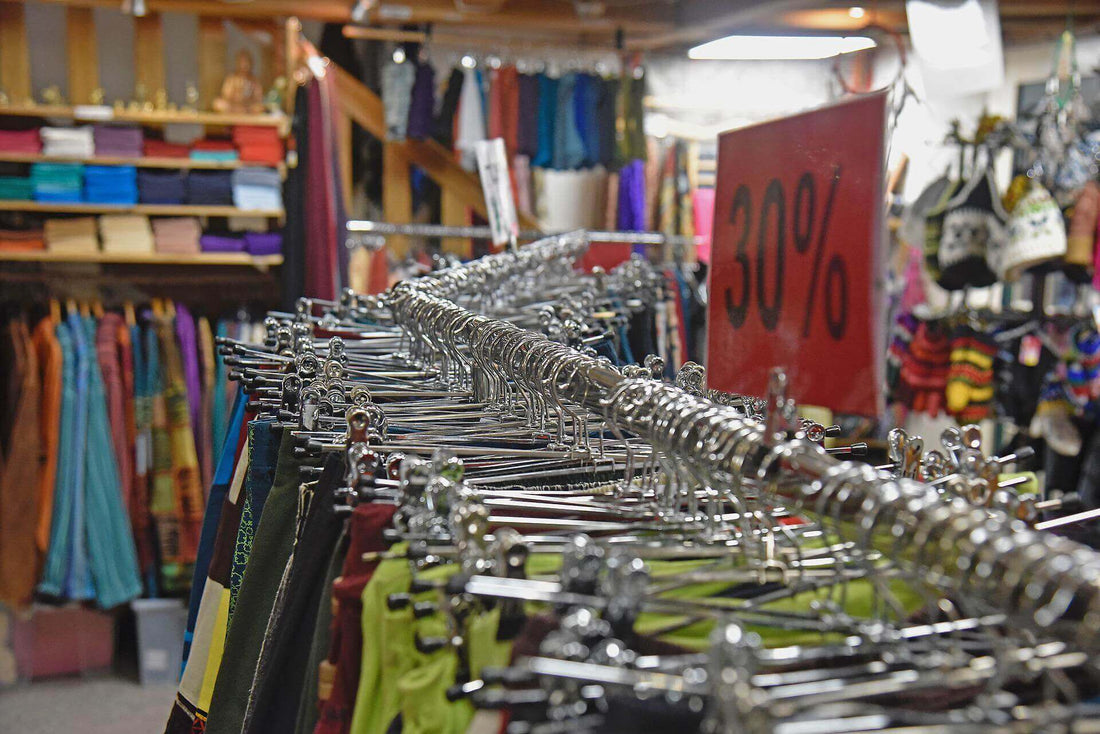
What is Slow Fashion and Why You Should Care
Jenny LewisShare
You know the feeling. You’re standing in front of your closet, surveying your clothes and thinking, “I have nothing to wear!” Even though your closet is full of clothes, you have nothing that feels new or exciting. This feeling is all too common in today’s world of fast fashion.
Fast fashion is the term used to describe the quick turnover of trends in the fashion industry. This system is built on mass production, quick consumption, and cheap clothes. As a result, it’s extremely damaging to both people and the environment.
Fortunately, there’s a growing movement of people who are rejecting fast fashion in favour of a slower, more sustainable approach – known as slow fashion. Slow fashion is the antithesis of fast fashion. It’s based on quality over quantity, sustainability, and slow and mindful consumption.
If you’re curious about slow fashion and why it’s so important, keep reading!
What is Slow Fashion?
Slow fashion is a movement that challenges the traditional model of fast fashion by emphasising quality, sustainability, and mindfulness in the fashion industry. It’s built upon the idea of building a wardrobe that will last a lifetime, rather than following trends and buying cheap clothes that will quickly fall apart. The slow fashion movement emphasises using quality materials and timeless styles, as well as sourcing materials and production methods that minimise their environmental impact. It also prioritises clothing that’s ethically produced, meaning workers are paid a fair wage and have safe working conditions. Slow fashion doesn’t limit itself to just clothing – it also includes ethical and sustainable production of shoes, accessories, and home items. It’s also concerned with a slower fashion cycle, meaning it takes longer for new trends to arrive and last.
The Problems With Fast Fashion
Fast fashion is built on the idea that trends come and go quickly, and you need to keep up with the latest styles to be fashionable. To keep up with this cycle, companies produce cheap clothes at an incredibly fast pace and in large quantities. This system is extremely damaging to both the environment and people. Fast fashion puts a strain on natural resources, as it takes a lot of energy and water to produce cheap clothes. It’s also guilty of worker exploitation, in that the workers who produce these items are often paid meagre wages and are subjected to inhumane working conditions. On top of that, fast fashion is also responsible for contributing to the ever-growing pile of clothing waste that’s overwhelming landfills. This is because many of these clothes are made with low-quality materials, and are designed to fall apart quickly. As a result, people need to buy more items more often to keep up with the cycle.
The Benefits of Slow Fashion
Slow fashion is about taking a more mindful and thoughtful approach to fashion. It emphasises buying fewer pieces but buying better-quality items that will last longer. By investing in quality items that are ethically and sustainably produced, you’re supporting a positive change in the fashion industry and helping to reduce its negative impacts. When you buy slow fashion items, you’re reducing your demand for mass-produced, cheaply made clothes that have huge environmental and social impacts. Instead, you’re supporting independent brands that are creating ethically produced items that have a smaller carbon footprint. Additionally, when you invest slowly, you’re investing in quality items that will stand the test of time. If you take care of your slow fashion items and store them properly, they’ll last you many years and will continue to look great.
How to Shop for Slow Fashion
If you’re interested in transitioning to slow fashion, the best way to start is by doing some research. Find out which brands are ethical and sustainable, and which ones use quality materials and construction. Additionally, look for brands that are transparent about their production processes. Once you’ve done your research, you can start shopping for slow-fashion items. When you come across a piece you like, take the time to familiarise yourself with the materials and construction. Ask yourself if this is something you’ll be able to wear for a long time and if the price is fair for the quality and construction. It’s also a good idea to invest in timeless pieces such as jeans, jackets, and coats that you can wear for years. Avoid trends that come and go quickly and stick to classic items that will last.
Supporting Slow Fashion Brands
Once you’ve taken the plunge and invested in slow fashion items, it’s important to support the brands you’ve purchased from. Spread the word about these brands to your friends and family and encourage them to make the switch to slow fashion as well. You can also show your support by engaging with the brands on social media and leaving favourable reviews. These small acts of support help the brands to continue making ethical, sustainable clothing and can help spread the word about slow fashion to a wider audience. Overall, slow fashion is a great way to reduce your environmental impact and bring more mindfulness to your wardrobe. By making the switch to slow fashion, you’re supporting ethical and sustainable production, as well as reducing your demand for fast fashion. Additionally, you’ll be investing in quality items that will last you a lifetime and will still look great, as opposed to cheaply made items that quickly fall apart. So, if you’re ready to make your wardrobe more ethical and sustainable, consider investing in slow fashion!
Some Brands That Use Natural and Organic Fabrics At Encore Fashion